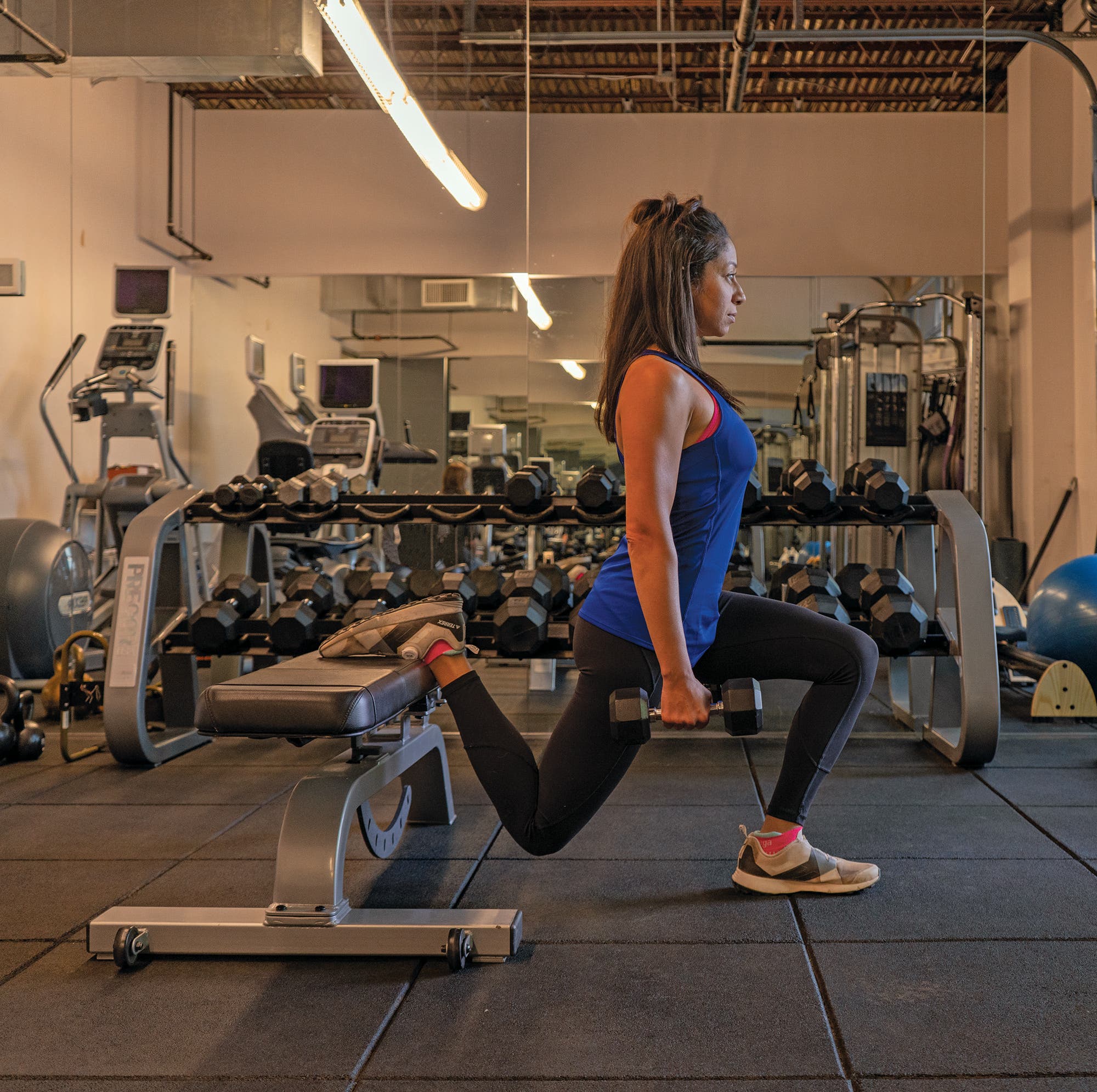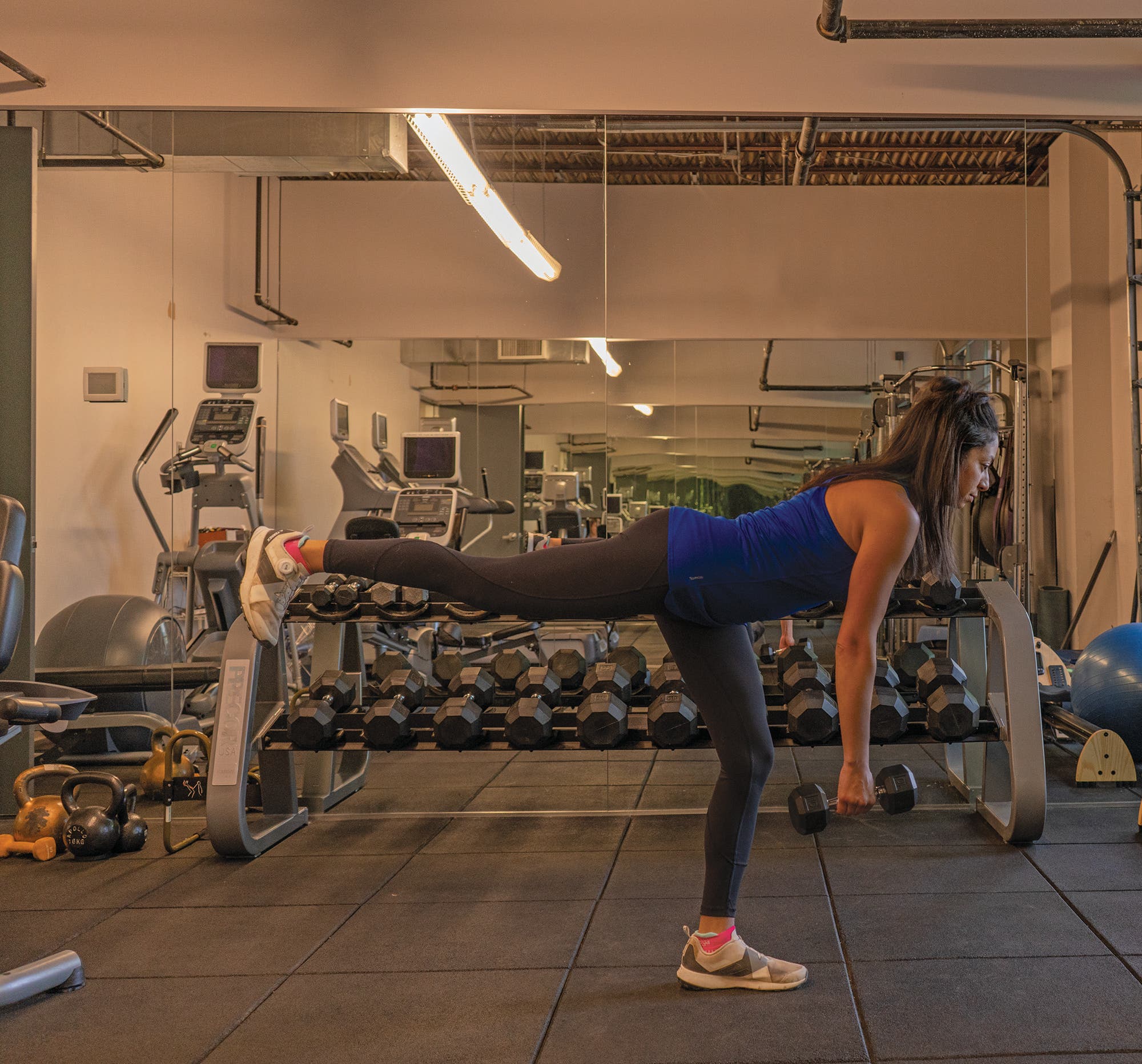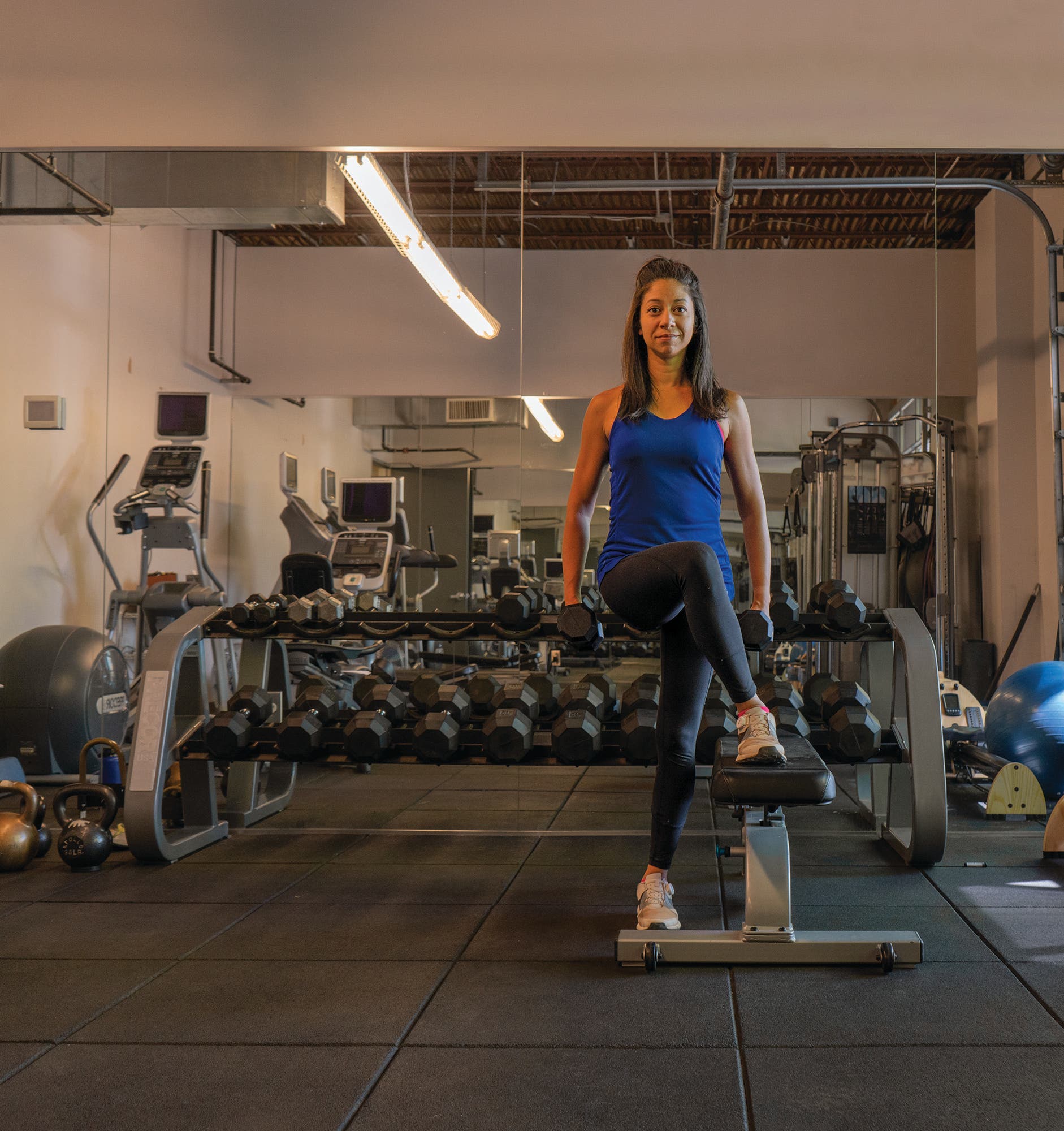3 Exercises to Train for Carrying Heavy Packs

We’re all about going fast and light, but sometimes you just need more stuff. This is especially true in the winter, when pack weight for a weeklong trip can tip the scales at 50 pounds. Maintain pace under the load and prevent next-day soreness with these power- and stability-focused exercises. For maximum benefit, do them twice per week, starting eight weeks in advance of your next heavy hike.
The Expert: For two decades, Corey Crane has worked with NFL and NCAA teams as a strength and conditioning coach. In his spare time, he works on knocking off big sections of the Appalachian and Continental Divide Trails. His trail name is Motel.
Single-Leg Squats

What An asymmetrical exercise targeting the quads, hamstrings, and glutes
Why Improve stability, mobility, and flexibility while strengthening weight-bearing muscles. Sets 4 Reps 6 Rest 3 minutes
1. Hold dumbbells in each hand or put on a weighted pack (start with 30 pounds total). Stand 3 feet from a knee-high bench (facing away from it) and extend one leg behind you. The top of that foot should rest on the bench.
2. Lower into a squat for a count of four until your front thigh is parallel to the floor (make sure your knee does not go past your toes).
3. Drive up through your heel for a count of two to return to the starting position.
Make it harder: Increase the total weight by 5 pounds each week. Switch to a barbell when the dumbells get too heavy to hold.
Single-Leg Romanian DeadLifts

What A balance-intensive forward fold that targets your back and hamstrings
Why Strengthen the muscles oppositional to your quads to avoid injury on long descents. Sets 3 Reps 8 Rest 2 minutes
1. Stand on one leg and hold a dumbbell in the opposite hand (start with 5 pounds).
2. Hinge forward at the hips with one leg extended behind you and your back straight.
3. Let gravity pull the dumbbell straight down for four counts, until it’s level with the middle of your shin (keep your back flat). At this point, your back and extended leg should both be parallel to the floor.
4. Contract your glutes and hamstrings to bring yourself back up to the starting position over a count of two.
Make it harder: Increase weight by 5 pounds each session.
Crossover Step-Ups

What One of the best functional exercises for mimicking uphill hiking, but with a slight twist
Why Incorporate your abductors and adductors (inner and outer thighs) to prevent injury and soreness under heavy loads. Sets 3 Reps 10 Rest 1 minute
1. Grab a dumbell in each hand (start with 5-pounders) and stand beside a bench or plyometrics box that’s about knee height.
2. Step up with your outside foot, crossing it in front of your other leg.
3. Push through your heel to bring yourself onto the box while driving your opposite knee up until it’s level with your hips.
4. Slowly lower yourself back down to the starting position over a count of two.
Make it harder: Add a biceps curl and shoulder press to the top of the movement to train core engagement and balance.
You’re Doing it Wrong: Don’t Rush It
Training with fast, jerky movements might seem more effective, but it actually increases the stress on your bones and joints and inefficiently loads the muscles. “I recommend focusing more on the eccentric phase of each rep—when your muscles are lengthening,” Crane says. That means hinging slowly to the floor during Romanian deadlifts or lowering slowly off the box after a step-up, moves which offer the added benefit of training your muscles for long descents. Crane recommends taking two to four seconds to perform the eccentric contraction (lengthening phase) of every rep. “This will help minimize muscle soreness you feel the next day after a long hike with a heavy pack,” he says.